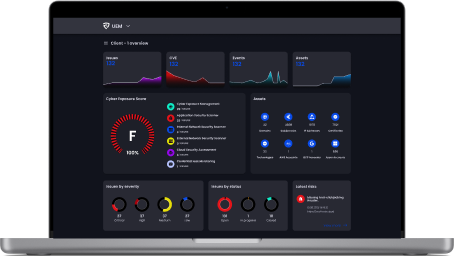Che cos'è un record?
Ma cos'è esattamente un record A, come funziona e perché è importante? Questa guida completa spiegherà tutto ciò che devi sapere sul record di indirizzi DNS.
Che cos'è un record DNS A?
Un record DNS A associa un nome di dominio all'indirizzo IP (IPv4) del computer che ospita il dominio. La «A» nel record A sta per «indirizzo». Il formato di un record A è:
domainname.com Un indirizzo IP
Alcuni esempi potrebbero essere:
example.com A 192.0.2.44
www.wikipedia.org A 91.198.174.192
Senza un record A correttamente configurato, non è possibile risolvere un nome di dominio per connettere gli utenti al sito Web o al server Web corretto.
Il record A indica l'indirizzo IP del server che contiene il record DNS autoritativo per il dominio. Ciò consente di tradurre il nome di dominio per l'accesso da parte di dispositivi connessi a Internet.
Come funzionano gli A Records
I record DNS A vengono utilizzati nel processo di risoluzione dei nomi di dominio in indirizzi IP numerici necessari per la navigazione su Internet.
Quando un utente digita un nome di dominio in un browser Web, inizia la ricerca DNS. Controllerà innanzitutto la cache del dispositivo locale e quindi interrogherà il resolver DNS del provider di servizi Internet (ISP) se non viene trovato alcun record.
Il resolver DNS avvia una query ricorsiva che viene passata tra vari server DNS fino a raggiungere il server dei nomi autorevole per quel dominio. Questo server DNS autorevole contiene il record A che contiene l'indirizzo IP corrispondente per il nome di dominio richiesto.
Una volta individuato, l'indirizzo IP del record A viene rispedito attraverso la catena di server DNS al resolver originale che ha effettuato la query ricorsiva. Il resolver DNS restituisce quindi l'indirizzo IP al browser web dell'utente.
Con l'indirizzo IP ora noto, il browser può richiedere e visualizzare il sito Web corretto associato al nome di dominio iniziale inserito dall'utente.
Con miliardi di richieste DNS che avvengono a livello globale ogni giorno, i record DNS A aiutano a velocizzare il processo di recupero dell'IP fornendo un modo semplice e veloce per abbinare i nomi di dominio agli indirizzi dei siti Web corrispondenti.
Come trovare il record A per un dominio
Puoi facilmente cercare il record A (indirizzo IP) associato a qualsiasi nome di dominio utilizzando semplici strumenti da riga di comando come ping, host, dig o nslookup.
Ad esempio, per trovare il record A per example.com, puoi digitare:
$ host -t A example.com
example.com ha l'indirizzo 93.184.216.34
Il valore del record A verrà visualizzato accanto a «has address» nell'output. Esistono anche molti strumenti di ricerca DNS online che possono essere utilizzati per trovare e verificare le informazioni del record A di un dominio.
Quanto durano i record DNS A?
I record DNS A hanno un tempo di vita predefinito (TTL) di 14.400 secondi, che equivale a 4 ore. Questo TTL significa che qualsiasi modifica apportata al record A può richiedere fino a 4 ore per propagarsi completamente nel sistema DNS globale dopo l'aggiornamento del record da parte del proprietario del dominio.
Poiché gli indirizzi IP della maggior parte dei siti Web non cambiano molto frequentemente, questo lungo TTL predefinito è utile per ridurre il traffico DNS complessivo. I resolver DNS e altri server sono in grado di memorizzare nella cache i dati del record A per l'intera durata del TTL prima di dover interrogare nuovamente il name server autoritativo per eventuali aggiornamenti.
Perché i record DNS A sono importanti?
I record A sono una componente fondamentale del sistema DNS per alcuni motivi chiave:
- Consenti la traduzione dei nomi di dominio di facile utilizzo in indirizzi IP computerizzati necessari per il routing e il traffico Internet.
- Contribuisci a velocizzare il processo di risoluzione dei nomi di dominio fornendo una rapida ricerca degli indirizzi IP dai server di nomi autorevoli distribuiti a livello globale.
- Riduci le query DNS complessive e l'utilizzo della larghezza di banda tramite il caching basato su TTL in vari punti dell'architettura DNS.
- Semplifica l'amministrazione del DNS semplificando la modifica dell'indirizzo IP di un dominio in un unico posto (il record A).
- Abilita una ridondanza affidabile tramite funzionalità come il failover DNS che si basa sulla modifica dei record A per passare agli indirizzi IP di backup.
Il ruolo dei record DNS A diventa molto evidente se sono configurati in modo errato o non sono disponibili. I visitatori di un dominio con un record A danneggiato o senza record A riceveranno un errore che indica che non è stato possibile trovare l'indirizzo IP per quel dominio.
Alternative ai record DNS A
Per le reti IPv6, viene utilizzato un tipo di record diverso chiamato record AAAA al posto dei record A. I record AAAA funzionano allo stesso modo ma contengono gli indirizzi IPv6 esadecimali più lunghi anziché gli indirizzi IPv4 decimali.
Alcuni provider DNS offrono soluzioni alternative come il DNS dinamico in grado di aggiornare automaticamente i record DNS di un dominio anziché utilizzare record A statici. Ciò consente a un indirizzo IP di cambiare frequentemente, anziché dover modificare manualmente il record A ogni volta.
Tuttavia, per la maggior parte dei siti Web e dei domini odierni, vengono utilizzati semplici record A statici insieme a indirizzi IP immutabili per le massime prestazioni e semplicità. La corretta configurazione dei record DNS A rimane essenziale per mantenere i siti Web accessibili online.
Pronti a vedere di persona?
Prova tu stesso tutte le funzionalità della piattaforma. Nessun impegno e nessuna carta di credito!




.svg)
.svg)
.svg)
.svg)



.svg)
.svg)
.svg)
.svg)
.svg)
.svg)
.svg)
.svg)

